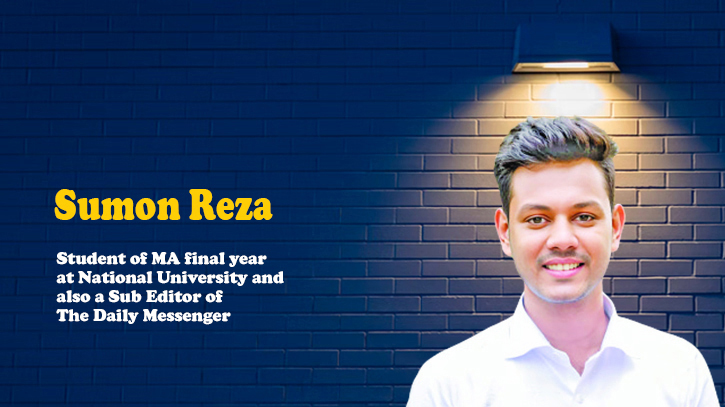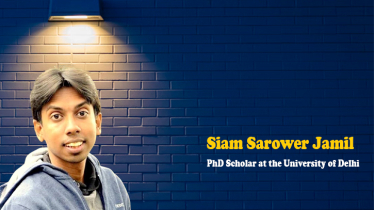
Photo: Messenger
The recent student protests in Bangladesh have not only ignited a powerful call for change but have also brought about a challenging reality for many: life under curfew without internet access. This period has proven that even in a world seemingly dominated by digital connections, the human spirit can find ways to thrive and connect in the face of adversity.
During the curfew, with the usual digital lifelines severed, people had to revert to more traditional means of communication and entertainment. For students, especially, the absence of the internet meant a pause in their academic routines and social interactions. Though the government shut down all educational institutions for safety. Yet, this didn't result in complete isolation; rather, it fostered creativity and a return to simpler, more tangible forms of interaction.
In the age of digital dependency, the sudden imposition of a curfew and the subsequent internet blackout during the recent student protests in Bangladesh left many grappling for ways to pass the time. As streets emptied and devices went dark, people turned to age-old methods to fill their days and nights, rediscovering a slower, more connected way of life.
Let's discuss how people spent their time during curfew. Yes, the days were partly monotonous and troublesome, but yet for the sake of entertainment, people discovered many ways to pass their time. Which apparently reminds the flavour of primitive days when there was no internet and so on. This time too people bring various methods for passing time. Among them, some notable methods are mentioned here.
Rediscovering Family Bonds
With the digital distractions removed, families found themselves reconnecting in meaningful ways. Board games, long abandoned, were dusted off and brought back to life. Ludo, chess, and carrom became the new evening staples. Parents shared stories from their own youth, while children, unaccustomed to such analog entertainment, learned the joys of a well-fought game or a gripping family tale.
So, one of the most notable shifts was the resurgence of family bonding. With the enforced homestay, families found themselves spending more quality time together.
Community Resilience
Despite the restrictions, communities found ways to support each other. Neighbours shared resources, from food to books, and offered moral support. In some areas, residents organised small, socially distanced gatherings in courtyards and rooftops, fostering a sense of unity and resilience.
Neighbourhood Bonding
Neighbourhoods saw a revival of community spirit. Without the distraction of screens, people took to their balconies and rooftops, engaging in conversations with neighbours from a safe distance. This communal interaction was reminiscent of times past, where evenings were spent chatting over cups of tea. Despite the tension in the air, these moments provided a semblance of normalcy and solidarity.
Books: The Original Time Machine
Books, often neglected in favour of screens, saw a resurgence in popularity. Libraries and personal collections were explored anew. Classic literature, contemporary novels, and everything in between offered an escape from the tension outside. For many, the enforced downtime provided an opportunity to finally tackle those long reading lists.
Books, which had been collecting dust on shelves, became treasured companions once again. Students and adults alike delved into literature, discovering new worlds and revisiting old favourites.
Outdoor Games
It's true that in the time of active curfew, it is completely restricted to go outside. But yet still people specially teenagers and young people came out of home though in limited number and areas and they start playing outdoor games. The scenario was common to see guys playing cricket or football in roadside or here and there. It's unusual to see as most of this generation mostly pass time on virtual life. But this time they too play outdoor games with friends.
Newspaper Reading
Reading printed newspapers suddenly became more popular during these curfew days. As the online versions are closed due to internet shutdown. People return to collect newspapers for information. And the sale of newspapers increased notably during these days. People were mostly dependent on newspapers for knowing the situation and so on.
Movie Sharing
For the sudden collapse of internet young generation who used to watch movies fall sudden trouble so far. Many of them became frustrated as they had no downloaded ones. But there were some who had downloaded movies, series, and dramas in their collection. These guys got extra appreciation from their fellow lovers. And the sharing of these items was a common thing during these days.
Culinary Adventures
Kitchens across the nation became the hubs of creativity and learning. Families experimented with new recipes, rediscovered traditional dishes, and indulged in the joy of cooking together. The aroma of freshly baked goods and savoury meals filled homes, offering comfort and a sense of normalcy amid the uncertainty. Cooking and baking, often seen as chores, became popular activities.
Mindfulness and Self-Care
For many, the curfew was a chance to slow down and focus on personal well-being. Yoga, meditation, and exercise routines became daily rituals. People spent time reflecting, journaling, and engaging in hobbies that had long been sidelined. This period of forced introspection allowed many to reconnect with themselves and their immediate surroundings.
Creative Pursuits
Artistic expression flourished in this internet-free environment. People picked up paint brushes, sketch pads, musical instruments, and crafts. Homes were filled with the sounds of music and the sights of new art projects. Creativity became a source of solace and a way to process the complex emotions brought on by the protests and the curfew.
Connecting in New Ways
While digital connections were severed, people found alternative ways to stay in touch. Phone calls and face-to-face conversations became more meaningful, as people cherished these moments of genuine interaction.
In addition, the absence of the internet spurred a wave of creativity. Students picked up hobbies they had forgotten or never had time for before. Sketching, painting, writing, and music filled the void left by social media and streaming services. These creative outlets provided a therapeutic escape and a way to process the unfolding events.
While the curfew and internet blackout presented numerous challenges, they also highlighted the resilience and adaptability of the Bangladeshi people. Stripped of digital conveniences, people found meaningful ways to connect, create, and cope. This period has served as a powerful reminder that human connection and ingenuity can flourish even in the most constrained circumstances.
As the curfew lifts and the internet returns, these experiences may leave a lasting impact. Perhaps, in the rush to reconnect digitally, there will be a newfound appreciation for the simple, offline joys that kept spirits high during the toughest of times.
In conclusion, the curfew during the student protests in Bangladesh, compounded by the internet shutdown, was a stark reminder of our reliance on digital technology. Yet, it also revealed the resilience and adaptability of the human spirit. Through rediscovering traditional pastimes and fostering deeper connections with family and community, people navigated this challenging time with creativity, solidarity, and a renewed appreciation for the simpler aspects of life.
The writer is a poet, columnist and journalist. He can be reached at [email protected].
Messenger/Disha








